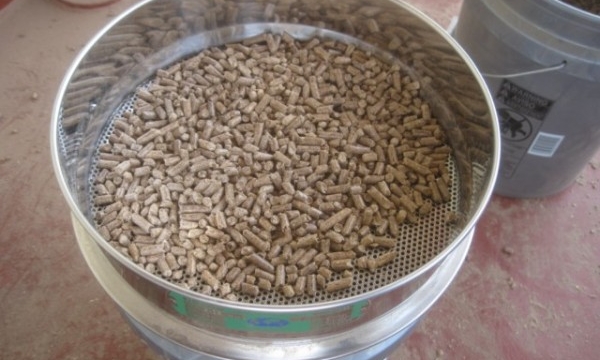Wood pellets:Particle size inside the industrial wood pellets
A very important indicator is also a particle size inside the pellets. According to I2 specification, 2,5 mm size particles should not exceed 90% and particles over 3,15 mm should not be more than 98%.This limitation helps to avoid retaining of the bigger particles in the mills of the power plant, which can slow down the speed of the passing through the mills and may create fire in the hammer mills of the power plant.
Particle size in the pellets is determined by EN 15149-2 and EN 16126 standard. According to this standard, approx. 200 g of pellets are put to soak in 600 ml distilled water, where they will remain for approximately 12 hours for the pellets to be dissolved in the water. Pellets particles dissolved in the water are then exposed to a temperature of 105 ºC until they are dry. The size of the sieves to be used may be as following: 0,25mm- 0,5 mm - 1,0mm – 1,4mm – 2,0 mm -3,15 mm, which means that the fractional distribution of the particle size can be done after the evaluation of the results of the test. As per International Specification, there is no limitation for small particles inside the pellets. It is on the contrary mentioned that 50% of the particles should be below 1mm size. Though, there is quite a lot of discussion around the amount of very small particles in the pellets.
Minimal Explosive Concentration for very fine wood dust (pine flour) can be about 38g per m3 or just 1,08 g per cubic feet. This is 30 mg per m3. Not so much! However, the problem seems to be serious, as some articles state that in a case the average size of particles in the wood dust is below 420 mcm (420 :1000= 0,42 mm) it can be dangerous due to a possible explosion. Some end users are especially concerned about small particles. One big UK utility has included into their specs the demand of particle size less than 420 mcm (0,42mm) not to exceed 50% of all particles and the number of particles with the size less than 85mcm (0,085 mm) to be not more than 5%.







